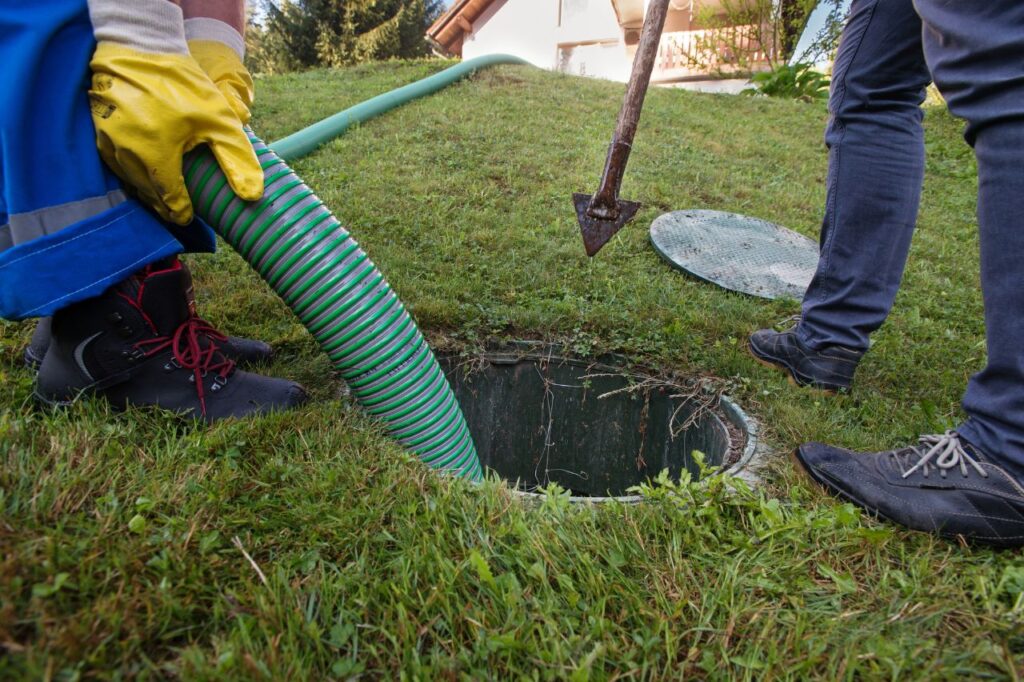Regular pump-outs of septic tanks are necessary to keep them from becoming too full. Generally, you should consider having them pumped when the solid material accumulates between 30-50% of the tank’s total capacity. If you decide to have your tank pumped, it’s important to make sure that all pumping procedures are completed correctly. Make sure to observe the pumps’ work and check off a list of steps they need to take.
What Usually Happens During a Septic Tank Pump-Out
Before Pump-Out
Before you begin to pump your septic tank, take a look at the liquid level of the tank in relation to the outlet pipe. If the level is below the pipe, it could be a sign that there’s a leak somewhere. On the other hand, if it’s above the pipe, there may be an issue with either the pipe leading to your drainfield or with the drainfield itself.
During Pump-Out
The proper way to pump a tank is from the manhole. This prevents damage from occurring to tees and baffles located in the inspection ports. If pumping must occur from the inspection ports, make sure that both sides of the tank are pumped as it is important to ensure all areas of the tank are emptied. Always monitor for backflow from the tank outlet pipe; a large amount of backflow can indicate a drainfield system backup while a small amount could suggest there is a sag in the pipe leading to the drainfield. When completing pumping processes, use a septage spoon and backflush to dislodge any sludge that may have settled into corners of the tank; however, do not leave any septage inside or scrub/power wash walls of the tank when finished.
After Pump-Out
After a septic tank has been pumped, it is important to assess the tank for any damage. Look for signs such as an open weep hole, leaking mid-seam, damaged baffles, or cracks. Once you have completed this assessment, be sure to file a report with your local town hall to inform them of the completed pump-out. The town may require that either you or the pumper provide the report.
How to Extend Time Between Pump-Outs
If you want to extend the time between pump-outs, there are a few things you can do on a daily basis. Be sure not to flush anything except toilet paper down your toilet. Things such as sanitary products, paper towels, and disposable diapers will harm your septic tank, causing more frequent pump-outs. Garbage disposals should also be avoided for food waste, coffee grounds, grease, and fat, as these items can damage your septic system over time. Reduce water usage by repairing any leaking faucets or toilets and using lower flow fixtures when possible. Turning off the water when brushing your teeth and shaving also helps conserve water. Additionally, keeping a compost pile can help reduce the amount of wastewater going into your septic tank, resulting in fewer pump-outs needed over time.
Will System Additives Reduce the Number of Pump-outs Needed?
Are system additives effective in reducing the number of pump-outs needed for septic tanks? Unfortunately, research indicates that biological enzymes and other “miracle” system additives do not improve septic system functioning. The amount of bacteria or enzyme in each dose of additive is too small for it to have any perceivable effect on tank performance. In fact, using this method of trying to get around regular pump-outs can create even bigger issues, as solids will end up clogging the drainfield, making repairs very costly. As some states forbid the use of acids and organic chemical solvents in septic systems due to potential water contamination risks anyway, it is best to stick with regularly scheduled tank pump-outs for optimal performance.

